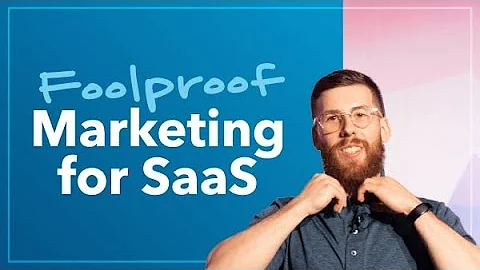Simplified Guide: How to Assess Demand
How to Check the Demand for a SaaS Startup?
Starting a Software as a Service (SaaS) startup can be an exciting venture, but before diving headfirst into development and marketing, it is crucial to assess the demand for your product. Understanding the market demand allows you to identify potential customers, refine your product offering, and develop a strategy for success. In this article, we will explore effective ways to check the demand for a SaaS startup and make data-driven decisions to drive growth.
Once you're in the hole, you'll have to make the riskiest bets
This is a paradoxical conclusion. Because in general, in a difficult situation - even if we personally have no money, even if the economy as a whole is collapsing - we just want to take less risky actions.
When it comes to life and business, the likelihood of encountering failure is invariably high. Moreover, the undeniable truth is that minimizing risks often leads to lower profitability even when success is achieved. Can we expect a little triumph to lead us out of this chaotic situation? Very unlikely.
The prospect of expanding its business model beyond Russia and penetrating international markets, especially in the USA. However, they refrained from immediately entering foreign territories due to the perceived high level of risk. It was clear that the risks involved were minimal when they flourished in a safe indoor environment.
Now the local market is collapsing. So what should founders do? "Enter the Latin American market." Why go there, since there is a low level of local competencies and less competition - this is one of the requirements of the theory of “big risks”. Uh-uh.
In more favorable times, the local market would have been able to take advantage of the opportunities presented here. At the same time, there was a gradual recognition of the uncertainty of the situation in Brazil, which prompted some to postpone entry into a potentially booming global market until a later date. What are the options as the situation worsens? Is it smarter to explore regions with lower risks? Or should you consider venturing into uncharted territories such as the United States, where previously unexplored opportunities may lurk?
By the way, there is a well-known Martingale strategy in which after each loss you need to reduce your bet. So that the winnings can cover all previous losses and make a profit from this last point (from one).
If we find ourselves in a difficult situation. What should our enterprise be like - a shawarma stall or a nationwide franchise? Which market should we enter: Brazil or the USA? All other options are indistinguishable.
1. Define Your Target Audience
Before evaluating the demand for your SaaS startup, it is essential to define your target audience. Identify the industry or niche that your product caters to and understand the specific pain points your solution addresses. This clarity will help you focus your market research efforts and provide a strong foundation for acquiring and retaining customers.
2. Conduct Market Research
Market research serves as the backbone of any successful startup. Start by analyzing your target audiences needs, preferences, and behaviors. Survey existing customers, conduct interviews, and analyze industry reports and studies to gather valuable insights.
Look for indicators such as the size of the target market, growth rate, competitors, and customer pain points. This information will help you gauge the competitiveness and demand for your SaaS startup. Use tools like Google Trends, industry forums, and social media platforms to gather qualitative data and opinions.
3. Study Competitors

Understanding your competitors is crucial to identifying the market demand for your SaaS startup. Analyze their product offerings, pricing strategies, marketing tactics, and customer reviews. Evaluate their strengths, weaknesses, and unique selling propositions (USPs).
By studying competitors, you can identify gaps in the market that your SaaS startup can fill. Differentiate your product by offering features and benefits that competitors lack or excel at areas that competitors perform poorly. This will help you gain a competitive advantage and attract potential customers.
4. Create a Landing Page or MVP
To validate the demand for your SaaS startup, consider creating a landing page or minimum viable product (MVP). A landing page can help you gauge interest and capture leads before your product is fully developed. Include key features, benefits, and pricing plans to entice potential customers to sign up or leave their contact information.
An MVP, on the other hand, allows you to offer a simplified version of your SaaS product to a limited audience. Gather feedback from early adopters and iterate based on their suggestions. This active feedback loop not only helps refine your offering but also demonstrates demand to potential investors and partners.
5. Seek Customer Feedback
One of the best ways to check demand for your SaaS startup is to engage with potential customers directly. Conduct surveys, host focus groups, or encourage feedback through customer support channels. Promptly address inquiries, questions, and criticisms to show your dedication towards improving the product and meeting customer needs.
By incorporating customer feedback into your product development process, you can align your offering with market demand. This iterative approach not only increases customer satisfaction but also establishes credibility and drives customer acquisition.
6. Analyze Search Volume and Keyword Research
Utilize SEO techniques to identify the demand for your SaaS startup through keyword research. Tools like Google Keyword Planner, SEMrush, and Moz can provide valuable insights into search volume, competition, and related keywords.
Identify high-volume keywords that align with your target audiences pain points and search intent. By optimizing your website and content around these keywords, you can attract organic traffic and potentially convert visitors into paying customers.
7. Leverage Social Media and Online Communities
Monitor social media platforms and online communities where your target audience actively engages. Join relevant groups, forums, and subreddits to understand their discussions, questions, and pain points. Active participation in these conversations not only allows you to gather valuable insights but also helps you establish yourself as an industry expert.
Engaging with potential customers through social media helps build brand awareness, generates interest, and drives demand for your SaaS startup.
https://youtube.com/embed/31U9X_XD63c
Checking the demand for a SaaS startup is crucial to its success. By defining your target audience, conducting market research, studying competitors, creating a landing page or MVP, seeking customer feedback, analyzing search volume, and leveraging social media, you can gather valuable insights into market demand. Using these insights, you can refine your product offering, marketing strategies, and customer acquisition plans to seize opportunities and achieve sustainable growth for your SaaS startup.

1. How long does it take to check the demand for a SaaS startup? The time required to check the demand for a SaaS startup varies based on factors such as industry competitiveness, market research depth, and customer engagement efforts. It can range from a few weeks to several months, depending on the complexity of the product and the size of the target market.
2. Should I invest in paid ads to gauge demand for my SaaS startup? Paid ads can be an effective way to test demand and gather data, provided you have a clear understanding of your target audience and their preferences. However, it is essential to set specific goals, optimize your ads, and monitor performance metrics to ensure a positive return on investment.
3. Can I launch my SaaS startup without checking the demand? Launching a SaaS startup without checking the demand can be risky. Conducting market research, studying competitors, and engaging with potential customers helps validate your product idea, identify gaps in the market, and refine your offering. By checking the demand beforehand, you improve your chances of success and reduce the likelihood of failure.
4. What are the benefits of understanding the demand for a SaaS startup? Understanding the demand for a SaaS startup allows you to make data-driven decisions regarding product development, market positioning, and customer acquisition strategies. It helps you identify target customers, refine your offering, and allocate resources effectively, increasing the likelihood of sustainable growth and profitability.
5. How often should I reassess the demand for my SaaS startup? The demand for your SaaS startup should be reassessed regularly to stay ahead of market trends and evolving customer needs. Aim to conduct periodic market research, analyze competitor strategies, and actively seek customer feedback to ensure your offering remains relevant and competitive in the dynamic SaaS landscape.
How the transformation of expensive into cheap occurs
I can explain it this way: everything that was expensive and small becomes mass-produced over time.
Ford didn't invent the automobile. He figured out how to make it cheaply and in large quantities. In the 2000s in Russia, restaurants were almost a luxury; Taxis were called quite rarely - they came for a short time only to decent people.
And don’t point your finger at the conventional Rolls-Royce. This is different, it is said differently: Stanford is actually selling “nothing”! Like Harvard with its nameplate above its diploma, it simply has it.
It should be noted that at the stage of turning from “expensive and piecemeal to mass”, the market for care for the elderly is at the beginning of a transitional stage: life expectancy is increasing, but the threshold for senile frailty remains almost the same. [6].
Some players have already started playing in this market, but without much success. As a rule, they have not yet received a sufficient number of customers and profits on the first iPhones or MagicLink smartphones around the world appeared only 13 years ago - 15-13 months before the first Apex!
However, my focus now is not only on supporting the senior care market, but also on promoting greater principles. Are you interested in defining a strategic path for your startup? Our goal should be to identify a product or service that is currently cost-prohibitive and fragmented, and to identify ways to deliver it at an affordable price without compromising consistent and satisfactory quality. Thus, it has the potential to become available on a larger scale.
Take McDonald's for example. By the way, there was a time in Russia when people, accustomed to luxurious restaurants, could not understand why McDonald's was called a restaurant. Now they have to wonder why a typical restaurant doesn't have burgers on its menu 😉
Rule N times
1. To become strong, you need to do pull-ups at least ten times a day. To write a book, you need to write at least ten pages of a draft every day. To get a job, you need to send out at least ten resumes every day. To sell something, you need to call at least ten clients every day.
2. To achieve certain results, it is extremely important to consistently perform one simple action for any given task every day, at least N times. The idea of saying I did a couple of pull-ups but didn't see any strength gains is as comical as saying I can't write a book because I lack inspiration, or admitting that I've talked to a few clients but haven't been able to. achieve sales.
3. Extremely important! Choose the simplest and most effective way to achieve your goal. Participating in marathon coding sessions every day does not necessarily lead to more sales. Likewise, a walk in the park looking for inspiration is not the fastest way to start writing a book.
4. What is it called in your case? what kind of disease is this?





